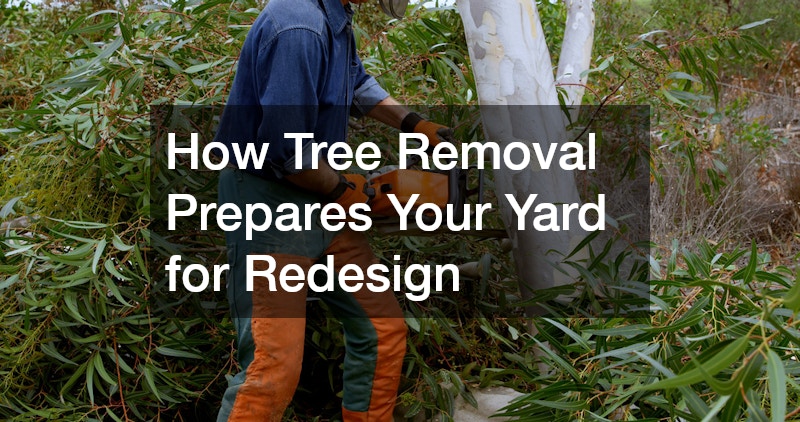Tree removal is often the foundational step in a yard redesign, serving as both a practical and aesthetic decision. Removing trees can open up your property, giving you the flexibility to rethink layouts, introduce new plants, and plan other landscaping projects. It’s not merely about clearing space; it can transform how light flows through your garden, improve soil quality, and even enhance safety. Many homeowners underestimate the impact that strategic tree removal can have on the overall health and usability of their outdoor space.
Beyond just clearing areas, tree removal allows you to work with professionals like a local arborist to assess which trees are vital and which may pose risks. It can also facilitate other upgrades, from installing patios with a local paver patio installations team to improving fencing, shutters, or even garage doors. The process integrates naturally with broader outdoor redesign efforts, including planning for artificial grass companies, hot tub companies, or even rodent control to maintain a healthy, safe, and visually appealing environment. By understanding the benefits and considerations, homeowners can approach tree removal as a critical investment in their property’s long-term value and enjoyment.
Why Is Tree Removal Necessary for Yard Redesign?
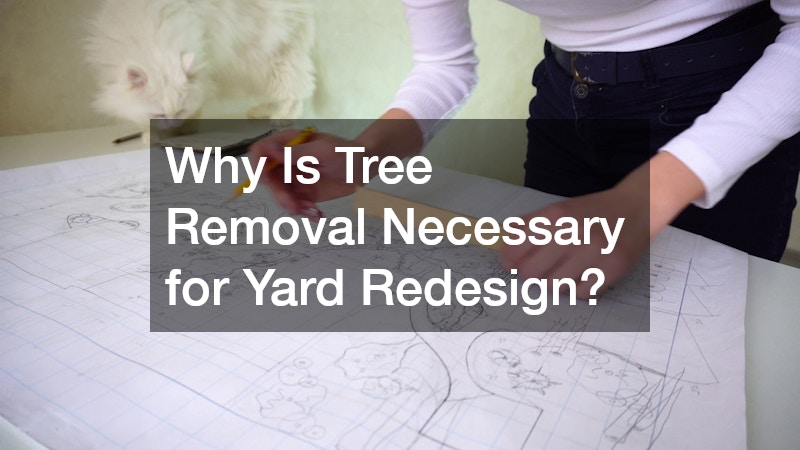
Understanding the Space
Tree removal dramatically changes how space in your yard is perceived and used. Large or overcrowded trees can dominate areas, making it difficult to install patios, garden beds, or artificial grass. Clearing these trees opens new possibilities for local paver patio installations, outdoor seating areas, or pathways, allowing homeowners to maximize their usable land. Beyond aesthetics, removing trees can create safer, more navigable landscapes, reducing trip hazards and enabling maintenance access. With more open space, you can better integrate other enhancements such as fences from a reputable fencing company or outdoor lighting schemes. The process also ensures that trees remaining in the yard complement the design rather than obstruct it, fostering a balanced and cohesive look throughout your property. By prioritizing which trees to remove, homeowners set the foundation for both functional and visually appealing landscapes.
Assessing Structural Integrity
Tree removal is often necessary for safety reasons, particularly when trees are unhealthy, leaning, or at risk of falling. Compromised structural integrity can threaten fences, garage doors, patios, and even your home’s roofing. Hiring a local arborist to evaluate tree health ensures that potentially hazardous trees are removed safely, protecting both people and property. Beyond immediate safety, removing structurally unsound trees allows other landscaping projects to proceed without interference. Whether planning artificial grass installations or upgrading outdoor amenities through hot tub companies and fencing company services, addressing the structural aspects first creates a stable foundation for the yard. Assessing integrity also helps homeowners plan for long-term maintenance and avoid costly emergency removals, which can disrupt redesign efforts.
What Types of Trees Are Most Commonly Removed?
Dead or Dying Trees
Dead or dying trees are the most obvious candidates for removal. Signs of decay, brittle branches, or sparse foliage indicate that a tree may pose risks or take up space better suited for new plantings or installations like patios or artificial grass. Removing these trees not only eliminates hazards but also clears areas for fresh landscaping projects. Professional tree removal ensures safe extraction, particularly for large specimens that might endanger nearby structures like fences, garage doors, or roofing. Working with a local arborist can help determine whether a tree is beyond recovery or could benefit from partial pruning. Eliminating dead or dying trees also contributes to healthier ecosystems in your yard, allowing for the introduction of new plants, shrubs, and design elements that improve overall curb appeal and functionality.
Overcrowded Trees
Overcrowding in the yard can result in poor tree health, stunted growth, and blocked sunlight. Removing some trees alleviates competition for nutrients and space, giving remaining trees and plants a better chance to thrive. This step is often critical before undertaking major redesigns, such as installing patios, fences, or artificial grass. Proper spacing also reduces the risk of damage to nearby structures, including garage doors and roofing. In collaboration with a local arborist, homeowners can plan selective tree removal that optimizes both safety and aesthetics. Overcrowding management ensures your yard layout accommodates desired features, from rodent control measures to strategic placement of outdoor amenities like hot tubs or patio seating areas, resulting in a healthier, more visually appealing landscape.
How Does Tree Removal Affect Yard Ecosystems?
Soil Health Considerations
Tree roots significantly influence soil structure, nutrient distribution, and water absorption. Removing trees changes these dynamics, often improving soil health over time and creating opportunities for planting new species. Healthy soil supports artificial grass installations, patio foundations, and other landscaping projects. However, it may require enrichment techniques to replace lost organic matter. In some cases, removal of large root systems can improve drainage and reduce erosion, enhancing overall yard sustainability. Homeowners should work with professionals to evaluate soil conditions and integrate rodent control strategies if disturbed areas attract pests. Thoughtful soil management following tree removal ensures that subsequent landscaping efforts, including fences, shutters, and other structural additions, will thrive in the rejuvenated environment.
Introducing New Plants
Once trees are removed, new planting opportunities abound. Homeowners can choose species that complement artificial grass, improve curb appeal, or support outdoor features such as patios, fencing, or hot tubs. Tree removal creates clear areas for aesthetic redesigns while offering flexibility to experiment with plant height, color schemes, and layout. Strategic selection ensures sunlight is optimized, soil health is maintained, and integration with other yard elements is seamless. New plants can also contribute to pest management and rodent control by selecting species less likely to attract unwanted visitors. Overall, the post-removal phase is ideal for reshaping your yard into a functional, beautiful space that meets both practical and aesthetic goals.
What Safety Measures Should Be Taken?
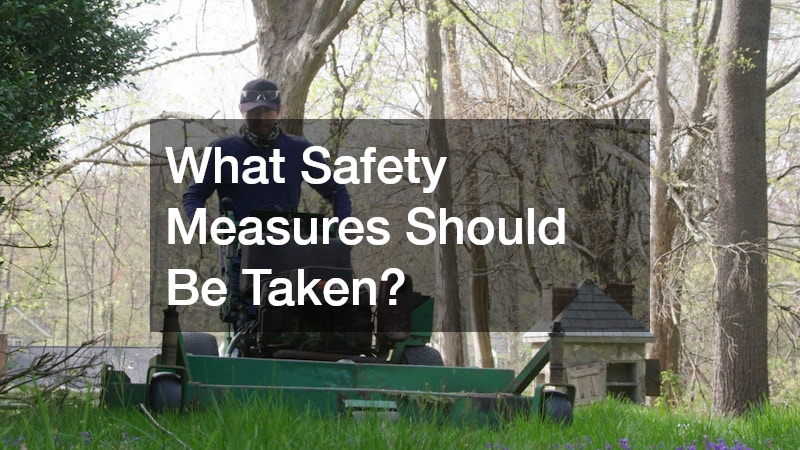
Hiring Professionals
Tree removal can be hazardous, particularly for large trees near structures such as garage doors, roofing, or fences. Hiring a local arborist ensures that trees are assessed, cut, and removed safely. Professionals have the expertise and equipment to handle hazardous situations and prevent accidents. In addition, experienced teams often coordinate with other services like artificial grass companies or local paver patio installations to ensure the yard is ready for redesign without disrupting ongoing projects. By investing in professional removal, homeowners also minimize the risk of property damage and reduce liability, making the entire landscaping process safer and more efficient.
Personal Safety Protocols
Even minor tree removal can pose risks. Homeowners attempting removal themselves should wear protective gear, including helmets, gloves, and eye protection. Before cutting, it’s important to clear surrounding areas, including patios, fences, or garage doors, and ensure that rodent control measures are in place if disturbing ground habitats. Planning escape routes and checking for overhead power lines are additional precautions. Understanding these protocols ensures that the removal process does not inadvertently create hazards or damage newly installed outdoor features.
How to Decide Which Trees to Remove?
Evaluating Tree Health
Assessing tree health is essential for determining which trees to remove. Look for signs like discoloration, hollow trunks, or excessive dead branches. A local arborist can provide a professional evaluation and suggest which trees may compromise your yard’s safety or impede redesign projects. Healthy trees may be retained to frame gardens or outdoor features, while weaker ones are removed to make room for artificial grass, local paver patio installations, or fencing upgrades. Aligning tree removal with overall health ensures long-term yard stability and reduces maintenance costs.
Aesthetic Considerations
Beyond health, aesthetics play a major role in deciding which trees to remove. Trees that obstruct sightlines, dominate the space, or clash with planned features like patios, hot tubs, or garden layouts may be removed to enhance curb appeal. Consider how sunlight, shadows, and seasonal changes affect your yard’s visual balance. Removing select trees can open views, provide symmetry, or create focal points, allowing shutters, fencing, or garage doors to complement the landscape. Thoughtful design ensures that the yard is both beautiful and functional after removal.
What Are the Best Times for Tree Removal?
Seasonal Factors
Timing tree removal is crucial. Late winter and early spring are often ideal, as trees are dormant, minimizing stress and sap loss. Seasonal timing also affects soil conditions, which is important for subsequent projects like artificial grass installation or patio construction. Removing trees during optimal seasons reduces risks of disease spread, improves worker safety, and ensures that new plants have time to establish roots. Professionals and local arborists can recommend the best window for removal, balancing seasonal factors with redesign schedules.
Tree Growth Cycles
Understanding tree growth cycles informs removal planning. Active growth periods can make cutting more difficult, whereas dormant periods make trees easier to manage. Knowledge of these cycles helps homeowners schedule projects like fencing, shutters, or garage doors installation in tandem with tree removal. Coordinating timing ensures minimal disruption to the yard ecosystem and promotes soil recovery for subsequent landscaping projects, including local paver patio installations or artificial grass placement.
Local Regulations
Many municipalities have laws governing tree removal, including protected species, permits, or seasonal restrictions. Complying with local regulations prevents fines and legal complications. Before removal, consult with a local arborist or city authorities to understand applicable codes. Coordinating legal compliance alongside redesign plans ensures that other projects—fencing company installations, patios, or hot tub placement—proceed smoothly without interruptions. Awareness of regulations also helps maintain harmony with neighbors and preserves community aesthetics.
How Does Tree Removal Affect Property Value?
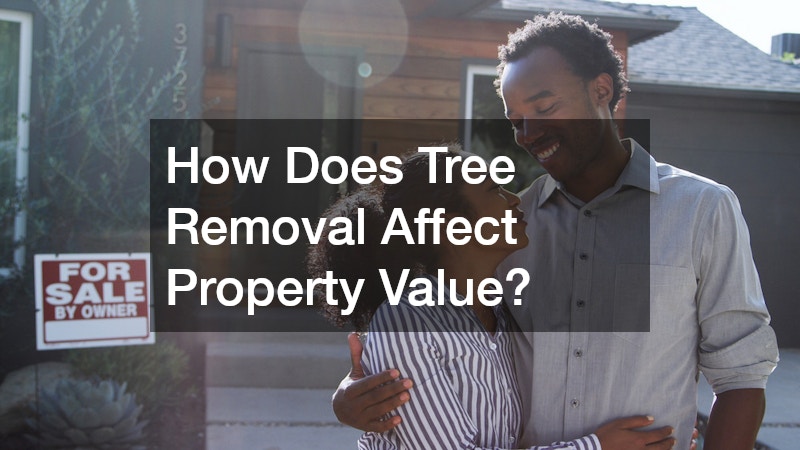
Market Perceptions
Strategic tree removal can positively influence how buyers perceive a property. A yard with well-placed trees, ample sunlight, and open spaces is more appealing than one cluttered with overgrown or dead trees. Removing select trees can highlight landscaping features, outdoor amenities, and other investments like artificial grass, fencing, or patios, making the home more attractive to potential buyers. Tree removal signals that the property has been maintained thoughtfully and safely.
Landscape Enhancements
Tree removal creates opportunities for significant landscape enhancements. New plantings, local paver patio installations, hot tubs, or improved fencing arrangements become feasible when unnecessary trees are cleared. Enhanced aesthetics, combined with increased sunlight and healthier soil, contribute to a more inviting outdoor space. These upgrades increase the overall value of the property and make it stand out in the real estate market.
What Happens to the Stump After Removal?
Stump Grinding Options
After tree removal, the remaining stump can be addressed through grinding or chemical treatments. Stump grinding efficiently clears space for patios, artificial grass, or other landscaping projects. Professional arborists often provide grinding services to ensure safe and thorough removal. Selecting the appropriate method ensures minimal disruption to soil structure and nearby installations like fencing or hot tubs.
Repurposing Stumps
Tree stumps can also be creatively repurposed. They can become planters, garden seating, or natural art pieces integrated into the yard design. Repurposing stumps adds character while maintaining functional space for patios, artificial grass, or fencing company projects. Thoughtful design ensures that even leftover stumps contribute positively to the overall aesthetic.
What Are the Common Mistakes to Avoid?
Lack of Planning
One of the biggest mistakes is removing trees without a clear plan. Lack of planning can lead to wasted space, damaged installations, or conflicts with other projects like patios, artificial grass, or fencing. Engaging a local arborist early and coordinating with hot tub companies or local paver patio installations teams ensures that tree removal aligns with the overall redesign vision.
Ignoring Root Systems
Neglecting root systems can compromise soil integrity, drainage, and nearby structures like fences or garage doors. Properly addressing roots prevents future damage and supports new landscaping projects, including artificial grass or patio foundations. Root management is an essential component of comprehensive tree removal and yard redesign.
Underestimating Costs
Tree removal costs vary widely based on size, location, and complexity. Failing to budget adequately can disrupt broader projects, including fencing, patios, or shutters. Understanding costs, including professional arborist fees, stump grinding, and potential landscaping adjustments, ensures smoother execution and avoids unexpected financial setbacks.
How to Prepare Your Yard for Redesign After Tree Removal?
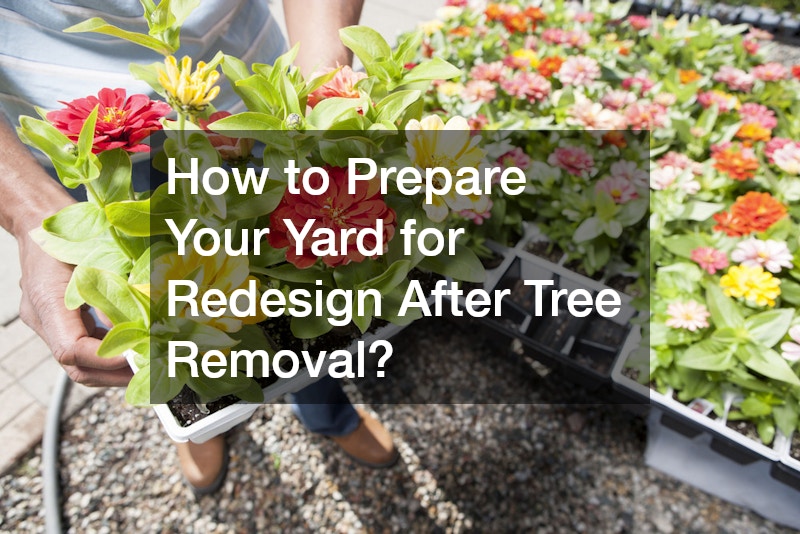
Soil Enrichment Techniques
Post-removal, soil enrichment is crucial for supporting new plants and installations. Adding compost, aerating the soil, and adjusting pH levels creates a healthy foundation for artificial grass, local paver patio installations, and other landscape features. Enriched soil also enhances rodent control by reducing hidden habitats and promoting robust plant growth.
Choosing New Plants
Selecting plants suited to your yard’s light, soil, and space is essential after tree removal. Native plants, shrubs, or small trees can complement artificial grass, patios, and other outdoor amenities. Consider sunlight, irrigation, and aesthetic balance to create a harmonious design that supports both beauty and functionality.
Conceptualizing Design Layouts
Visualizing the new yard layout ensures cohesive integration of features like fencing, shutters, garage doors, patios, and hot tubs. Use maps, software, or professional consultation to plan spacing, sightlines, and traffic flow. Strategic design planning maximizes the benefits of tree removal and creates a functional, attractive outdoor environment.
Strategic removal can also boost property value, providing aesthetic appeal, functional outdoor spaces, and a safer environment. Addressing stumps, soil, and root systems ensures that the yard is ready for artificial grass installations, hot tubs, shutters, or other enhancements. By avoiding common mistakes such as lack of planning or underestimating costs, homeowners can maximize the benefits of tree removal and set the stage for a harmonious, sustainable, and visually appealing outdoor space. Ultimately, tree removal is not just a practical step—it is an investment in the future beauty and usability of your property.
